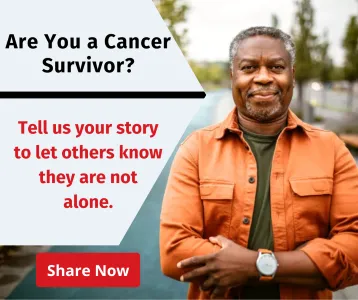How to Use Storytelling to Inspire Action & Drive Change

Throughout history, storytelling has offered people a powerful way to connect with and inspire one another. It's one reason why storytelling can be an effective tool for advocates.
Long before stories were recorded in print, people around the world shared stories in other forms with their communities. Early examples of storytelling can be found in cave paintings and petroglyphs depicting people engaged in hunting practices and other important cultural rituals. The ancient Greek tales in “Aesop’s Fables” were passed on for years through oral tradition before they were collected into print. Today the fables remain widely shared for their simple moral teachings.
From the Bible to Shakespeare’s timeless plays, examples of storytelling abound across civilizations, cultures, and eras.
The human brain is wired for stories. Stories create patterns we understand. We like beginnings, middles, and ends. Stories help create meaning. They help us problem solve. They help us teach. They help us record our histories and communicate our individual experiences. Stories can even help us advocate important issues that personally impact us or that we care about deeply.
How to Use Storytelling for Cancer Advocacy
As the ultimate storytellers at The Moth remind us, storytelling isn’t an opportunity to become a standup comic or to rant, lecture, or be a martyr. It is an opportunity to connect with others, especially those who may not understand your experience or point of view.
Storytelling helps us understand and empathize with one another. Because of this, stories can be excellent tools in an advocate’s toolbox.
Anyone impacted by cancer can share their story to inform communities and policymakers about issues that are affecting them as a cancer patient, survivor, caregiver, or loved one. In this way, storytelling can help raise awareness about concerns that need attention and action. This might be the need for a new policy that improves access to healthcare, or another positive change that would help improve the experiences of people impacted by cancer.
"You don’t need to be an expert in policy in order to advocate for something that you feel strongly about. Having a personal connection to an issue is part of what will make the work that you do resonate with so many people."
Your Story Matters
If you have been touched by cancer, chances are you have a story to tell. In fact, you may have more than one to share. To identify the story (or stories) you’d like to share with others, consider questions such as:
- What concerns have been most important to me in my cancer experience?
- What challenges or roadblocks have I faced?
- What has been helpful to me while navigating cancer?
- Are there changes I’d like to advocate for that could help others with cancer?
Take some time to reflect on your personal experiences and write down your ideas.
"When we rely on others to enact change that we want to see, we possess no agency in seeing those changes implemented. Your perspective and participation matter."
— Maria, cancer advocate
Ready to share your story?
These 7 tips can help you prepare:
- Tailor your story for the audience. Who are you trying to influence? Is it your Senator, state delegate, a cancer center director, or someone else? Tailor your message for the person or people to whom you are speaking. What do you want them to do, and what do they have the power to accomplish?
- Be authentic. Speak from your heart. Don’t read from a page. There should be nothing between you and your audience.
- Be relatable. Do your research. Determine what you have in common with your audience. Find common ground and start from there.
- Be specific and data driven. Carefully plan what you want to say. Outline your main points, use vivid details, and conclude strongly. Make sure to practice.
- Be succinct. You may only have a few minutes to communicate your story. You want to be as concise as possible while also expressing your story in a powerful way.
- Get to the point. What is your ultimate message? Make sure that you begin and end your story with that in mind.
- Include a call to action. Why are you telling your story? What do you want to accomplish? Connect your story to the specific ask.1,2
The best politicians can transcend politics. They make every person they talk to feel like the only person in the room. The best advocates can do the same.

As painful and unexpected as cancer is for any person, it is also an experience that brings people and communities together. Sharing stories may even help boost physical and mental wellness for both storytellers and their listeners. One study found that when children in an intensive care unit listened to stories for a half hour, they had lower cortisol levels and increased oxytocin.3
After finding that sharing her own story helped her, an M.D. living with multiple sclerosis started a story exchange, Health Story Collaborative, for people navigating illness.4
“If we can integrate our illness or trauma into our overall life stories, we can create what clinical psychologist Jonathan Adler calls a ‘narrative identity’ that enhances physiological and psychological health.”
— Brad, author, poet & cancer survivor
In one way or another, each one of us has been or will be touched by cancer, personally or through a loved one. Storytelling helps us empathize with one another's experiences and perspectives. And, by doing so, it can galvanize people to take action and inspire positive change.
- 1
Call Hub. The art of storytelling for advocacy campaigns. (2018). Retrieved from https://callhub.io/storytelling-for-advocacy/
- 2
Health Care Advocacy Network. Storytelling for Advocacy. (n.d.).
- 3
Robyn Flvush Ph.D. Storytelling Is Good for Us and Our Bodies. June 10, 2021. Psychology Today website. https://www.psychologytoday.com/us/blog/the-stories-of-our-lives/202106/storytelling-is-good-for-us-and-our-bodies
- 4
Annie Brewster, M.D. Stories Connect Us. Harvard Health Publishing, Harvard Medical School. July 21, 2021. https://www.health.harvard.edu/blog/stories-connect-us-202107212550